Spatial awareness Physical Science Worksheets for Ages 4-7
4 filtered results
-
From - To
Discover our engaging Spatial Awareness Physical Science Worksheets designed specifically for children ages 4 to 7. These worksheets are crafted to enhance spatial reasoning skills through fun activities that promote understanding of position, direction, and relationships between objects. Young learners will explore concepts like up and down, inside and outside, and distance through interactive tasks that stimulate their cognitive development. Ideal for parents and educators, these resources provide a solid foundation for children to grasp essential physical science concepts. Download our worksheets today to inspire creativity and curiosity in your child's scientific journey! Perfect for both home and classroom learning!
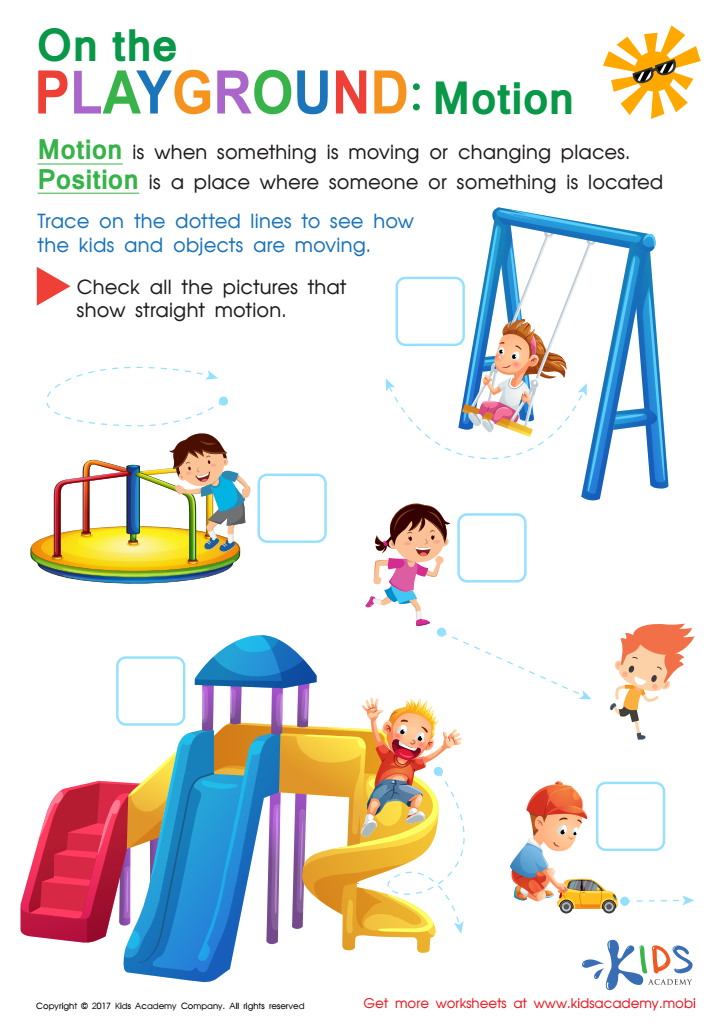

Position and Motion Worksheet
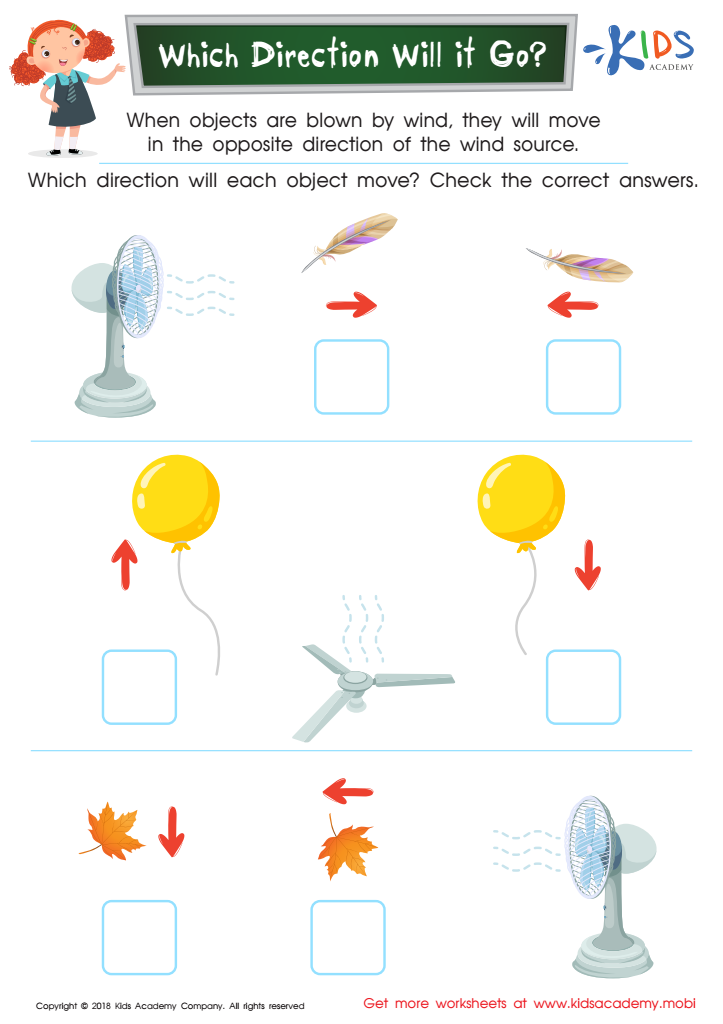

Which Direction Will it Go? Worksheet
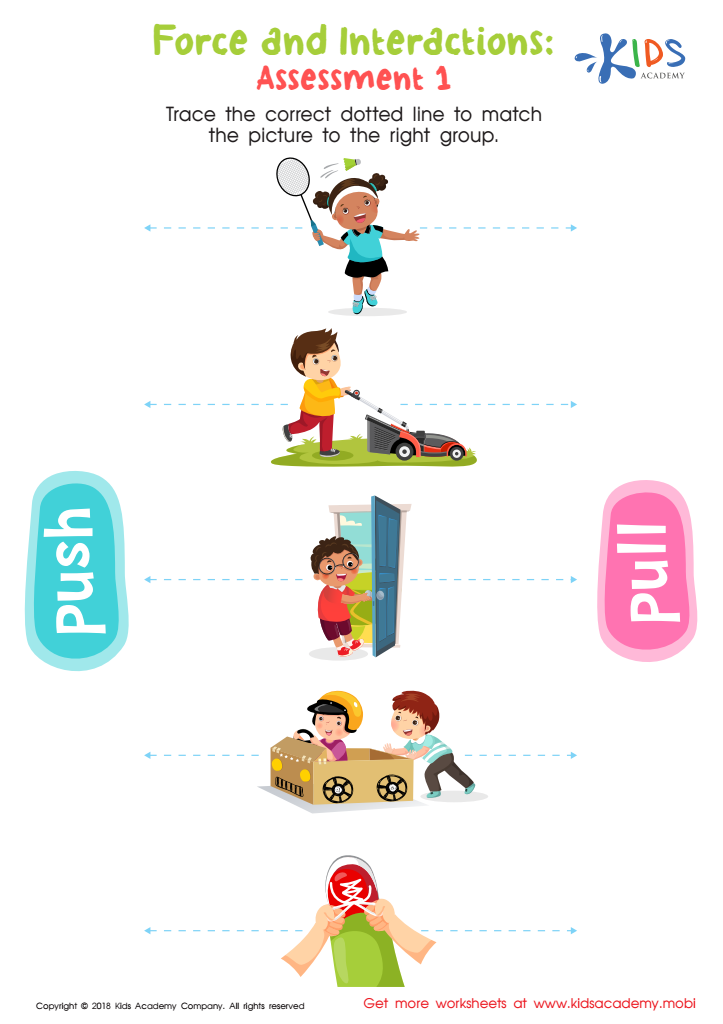

Force and Interactions: Assessment 2 Worksheet
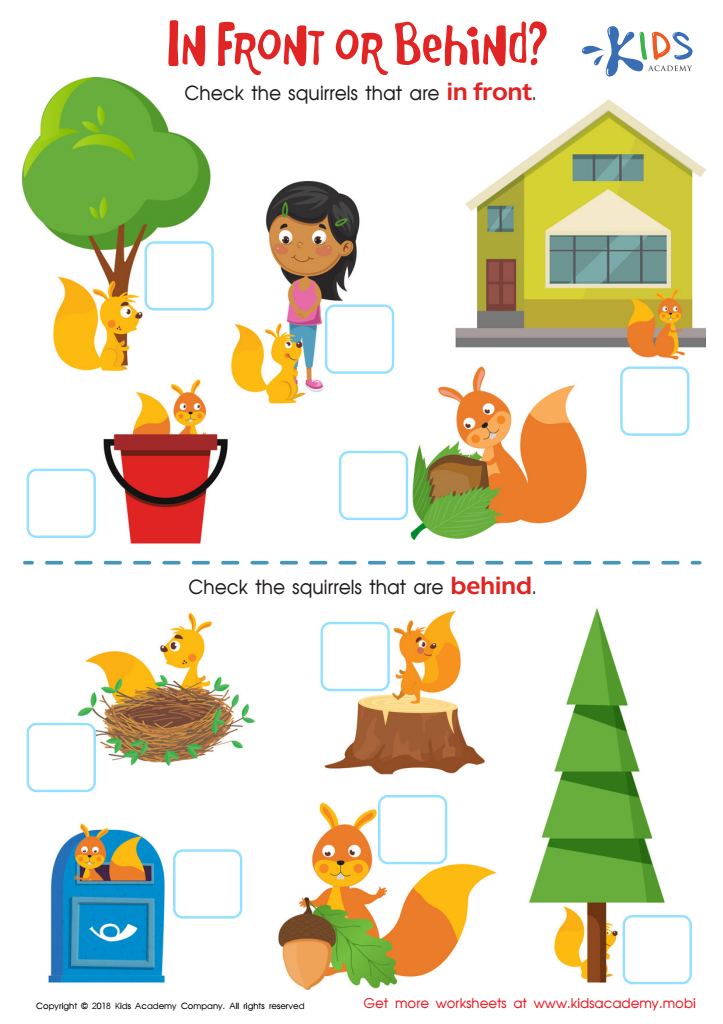

In Front or Behind: Part 2 Worksheet
Spatial awareness is a fundamental skill that significantly influences a child's cognitive, social, and emotional development, particularly in the realms of physical science and math. For children aged 4-7, mastering spatial awareness allows them to engage actively with their environment, enhancing their ability to navigate spaces, recognize shapes, and understand spatial relationships. Parents and teachers should care about this skill for several reasons.
Firstly, strong spatial awareness fosters problem-solving abilities. Children learn to visualize and manipulate objects in their minds, critical for tasks such as geometry and physics later in their education. Secondly, it plays a vital role in fostering creativity; understanding how objects fit together or move helps enhance imaginative play and artistic expression.
Moreover, spatial awareness can improve social skills. Collaborative activities that involve movement, construction, or exploration encourage communication and teamwork among peers. Finally, cultivating spatial awareness early can boost confidence as children master skills like reading maps or assembling puzzles, laying a solid foundation for future academic success.
Encouraging activities that promote this skill—like building blocks, drawing mazes, or interactive games—ensures that children not only comprehend their world better but are also equipped with skills they’ll need throughout their lives.
 Assign to My Students
Assign to My Students






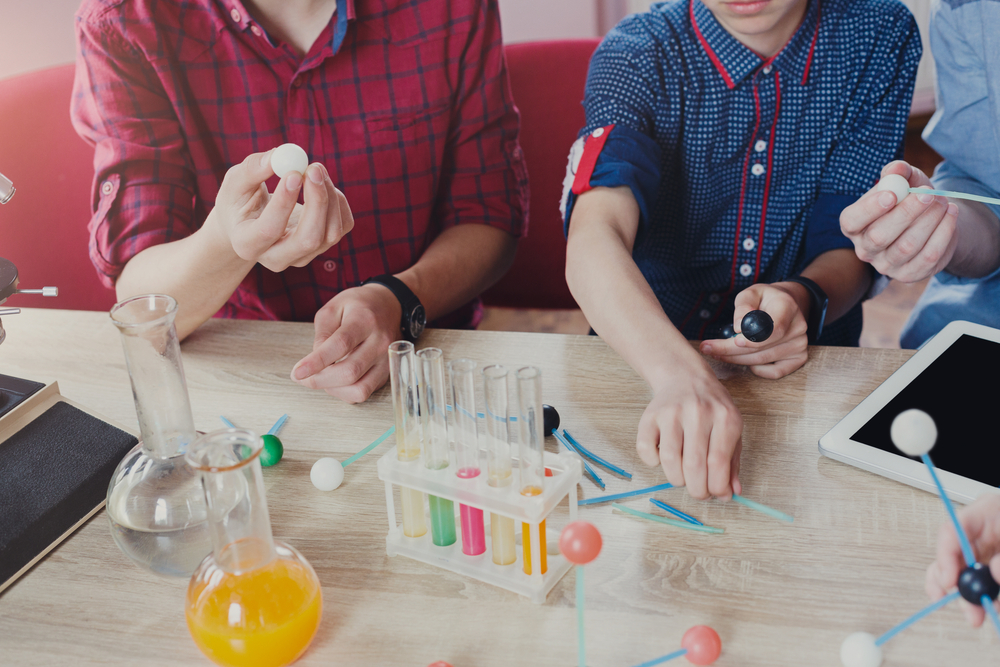
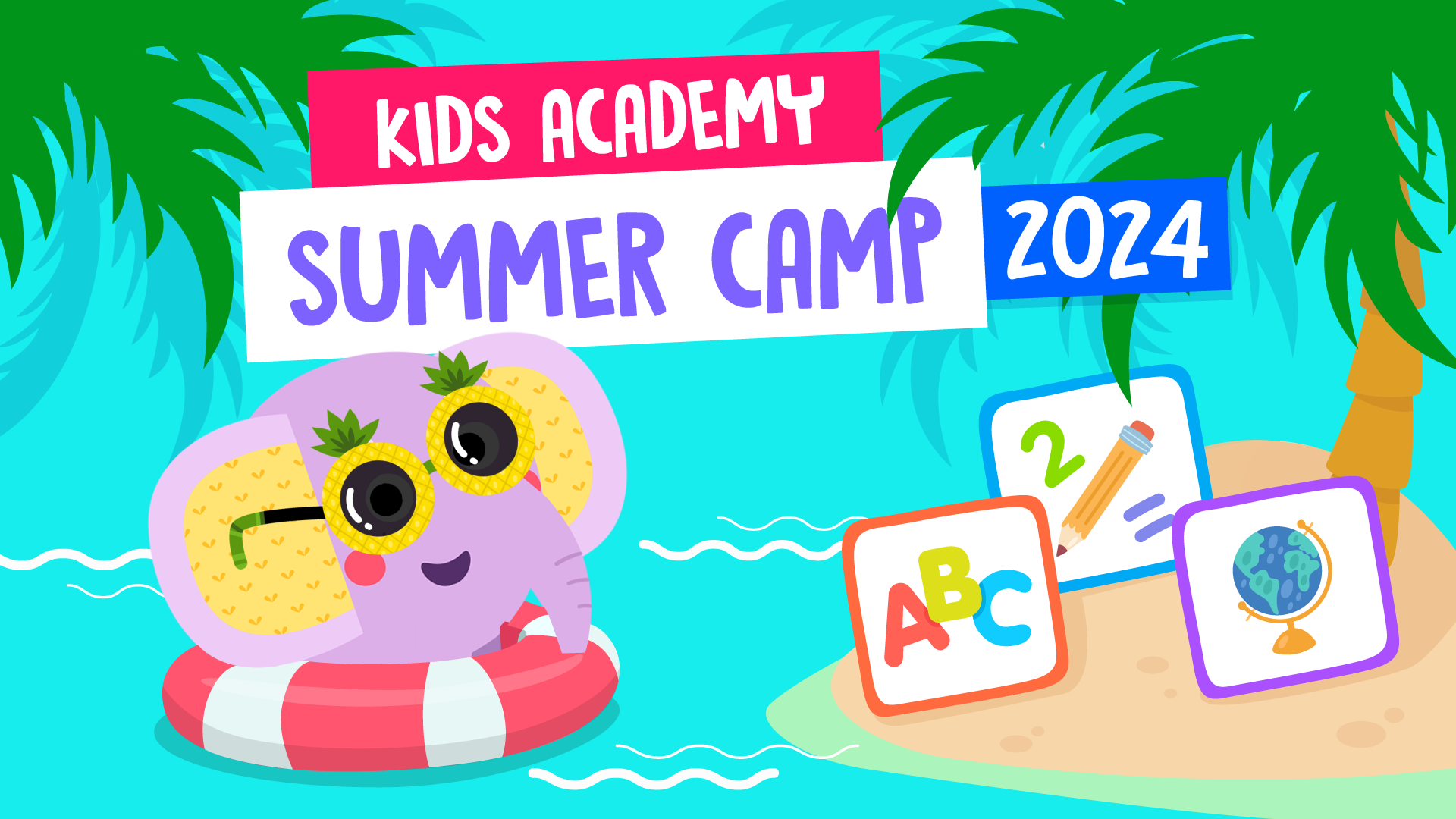
.jpg)










